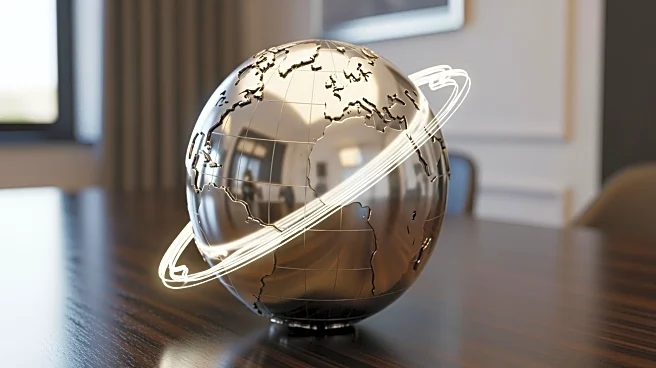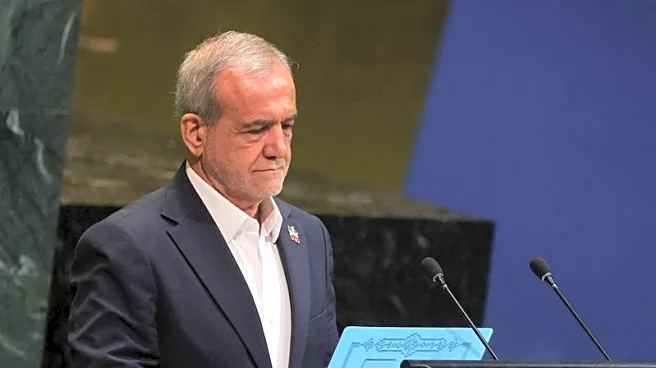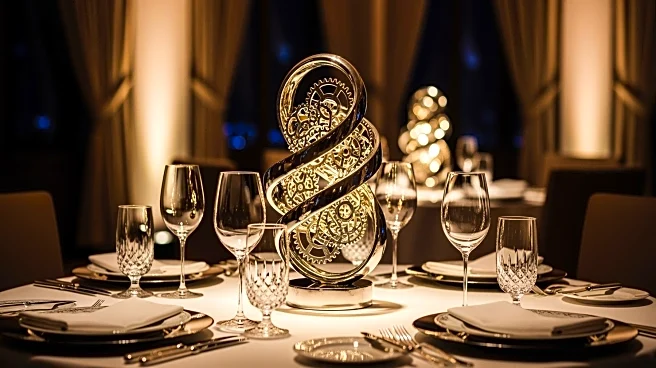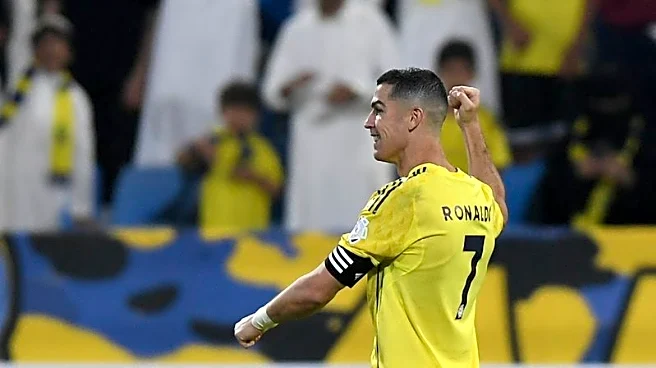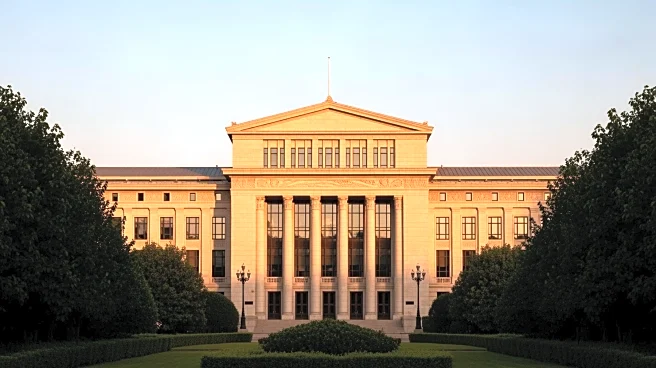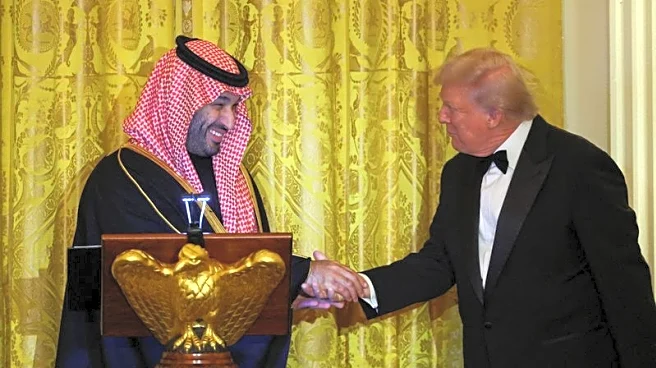What's Happening?
Saudi Crown Prince Mohammed Bin Salman Al Saud, serving as the prime minister and de facto ruler of Saudi Arabia, is known for his luxurious lifestyle despite advocating for austerity within the kingdom.
The prince has amassed significant wealth, controlling assets worth at least $1 billion through the Public Investment Fund, Saudi Arabia's sovereign wealth fund. His personal acquisitions include a $500 million mega yacht named Serene and a $300 million property, Château Louis XIV. Additionally, he reportedly purchased the Leonardo Da Vinci painting 'Salvator Mundi' for $450 million. These purchases contrast with his 2017 anti-corruption campaign, which targeted prominent Saudi businessmen, resulting in significant financial losses for many. Recently, Prince Mohammed visited the United States, hosted by President Trump, to strengthen ties and explore trade, tech, and nuclear cooperation.
Why It's Important?
The lifestyle of Crown Prince Mohammed Bin Salman highlights the disparity between his public advocacy for austerity and his private expenditures. This duality raises questions about governance and transparency within Saudi Arabia, especially given the prince's role in the 2017 anti-corruption campaign. His visit to the United States signifies the ongoing strategic partnership between the two nations, with potential implications for international trade and nuclear cooperation. The prince's actions and investments could influence global perceptions of Saudi Arabia's economic policies and its commitment to reform. Furthermore, the prince's wealth and influence underscore the power dynamics within the Middle East, affecting regional stability and international relations.
What's Next?
Prince Mohammed's visit to the United States may lead to new agreements in trade, technology, and nuclear cooperation, potentially impacting U.S.-Saudi relations. The outcomes of these discussions could affect global markets and geopolitical strategies. Additionally, the prince's continued leadership and financial decisions may influence Saudi Arabia's domestic policies and its international standing. Observers will likely monitor how the prince balances his luxurious lifestyle with his public commitments to reform and austerity, as well as the implications for Saudi Arabia's future governance and economic strategies.
Beyond the Headlines
The contrast between Prince Mohammed's personal wealth and his public anti-corruption efforts raises ethical questions about leadership and accountability in Saudi Arabia. This situation may prompt discussions on the role of transparency and governance in the kingdom, influencing future reforms. The prince's investments in art and real estate also reflect broader cultural and economic trends, highlighting the intersection of wealth, power, and cultural heritage. As Saudi Arabia navigates its path toward modernization, the prince's actions could shape the country's cultural identity and its approach to international diplomacy.



